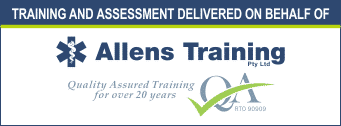When you undergo first aid training, one of the key aspects covered is familiarizing yourself with the essential items in a first aid kit. While we often get a quick overview during training sessions, there are many more items in a well-stocked first aid kit that we don’t always have time to discuss in detail. Here, we’ll go in-depth into these components so you can fully understand their uses and importance.
Instructions for Providing First Aid – Including CPR Flow Chart
Having clear, concise instructions on how to provide first aid is fundamental. This includes a CPR flow chart, which offers step-by-step guidance on performing cardiopulmonary resuscitation. These instructions are lifesavers, especially when you’re in a high-stress situation and need a quick refresher on essential techniques.

Note Book and Pen
A notebook and pen might seem trivial, but they are incredibly useful. Recording important details about the incident, the patient’s condition, and the care provided can be critical information for emergency responders when they arrive. It also helps keep track of any symptoms or changes in the patient’s condition.
Resuscitation Face Mask or Face Shield
A resuscitation face mask or face shield is designed to protect both the rescuer and the patient during CPR by preventing direct contact. This barrier device reduces the risk of cross-contamination and allows for safe and effective rescue breathing.
Gauze Pieces (7.5 x 7.5 cm, Sterile)

Gauze pieces are used for cleaning wounds and applying pressure to control bleeding. Sterile gauze is essential to prevent infection and ensure safe wound care. Having multiple packs ensures you’re prepared for multiple injuries or large wounds.
Saline (15 ml)
Saline solution is used for cleaning wounds and flushing out debris. It’s gentle on tissues and helps to prevent infections by keeping wounds clean. Small saline bottles are convenient for quick and easy use.
Wound Cleaning Wipe
Wound cleaning wipes are pre-soaked in antiseptic solutions, which help to clean and disinfect wounds. These wipes are handy for quick, on-the-spot wound care.
Adhesive Dressing Strips – Plastic or Fabric
Adhesive dressing strips, commonly known as band-aids, are essential for covering minor cuts, abrasions, and blisters. They protect the wound from dirt and bacteria, promoting quicker healing.
Splinter Probes (Single Use, Disposable)
Splinter probes are used to safely remove splinters and other small foreign objects from the skin. These disposable tools are sterile and minimize the risk of infection.
Disposable Nitrile Examination Gloves
Gloves are a must-have for maintaining hygiene and protecting both the first aider and the patient from infections. Nitrile gloves are preferred because they are latex-free and reduce the risk of allergic reactions.

Tweezers/Forceps
Tweezers or forceps are versatile tools in a first aid kit, useful for removing debris, splinters, or even for holding bandages in place while dressing a wound.
Antiseptic Liquid/Spray (50 ml)
Antiseptic liquid or spray is used to clean wounds and prevent infection. It is an essential component for disinfecting cuts, scrapes, and other injuries before applying a dressing.
Non-Adherent Wound Dressing/Pad (5 x 5 cm, 7.5 x 10 cm, 10 x 10 cm)
Non-adherent wound dressings are designed to cover wounds without sticking to them. They protect the wound while allowing it to heal and can be used with an additional bandage or tape to hold them in place.
Conforming Bandage (5 cm, 7.5 cm Width)
Conforming cotton bandages are elastic and designed to hold dressings in place and provide light compression to reduce swelling. They are flexible and can conform to different body parts.
Crepe Bandage (10 cm for Serious Bleeding and Pressure Application)
Crepe bandages are used for applying firm pressure to control serious bleeding and for providing support to sprains and strains. Their elasticity makes them ideal for creating a secure, adjustable wrap.
Scissors

Scissors are essential for cutting tape, bandages, and clothing if needed to access a wound. Medical scissors in first aid kits are typically blunt-ended to prevent accidental injury.
Non-Stretch, Hypoallergenic Adhesive Tape (2.5 cm Wide Roll)
Adhesive tape is used to secure dressings and bandages in place. Non-stretch, hypoallergenic tape is gentle on the skin, reducing the risk of irritation and allergic reactions.
Safety Pins (Packet of 6)
Safety pins are handy for securing bandages, slings, or other improvised medical aids. They are versatile tools that can help keep dressings in place.
BPC Wound Dressings No. 14 and No. 15

BPC wound dressings are sterile, highly absorbent dressings used for managing larger wounds and heavy bleeding. The No. 14 dressing is medium-sized, making it suitable for moderate wounds, while the No. 15 dressing is larger, ideal for more extensive injuries. These dressings are particularly useful in situations such as deep cuts, severe lacerations, or after surgery to cover and protect the wound, absorb exudate, and prevent infection.
Dressing – Combine Pad (9 x 20 cm)
Combine pads are highly absorbent dressings used for managing heavy bleeding and larger wounds. They provide excellent coverage and cushioning, promoting effective wound care.
Plastic Bags – Clip Seal
Clip seal plastic bags are used for disposing of contaminated materials like used gloves, bandages, and other medical waste. They help maintain hygiene and prevent the spread of infection.
Triangular Bandage (Minimum Width 90 cm)
Triangular bandages are versatile tools that can be used as slings for supporting injured limbs or for creating pressure dressings. They are a staple in first aid kits due to their multiple uses.
Emergency Rescue Blanket (for Shock or Hypothermia)
Emergency rescue blankets, also known as thermal or space blankets, help retain body heat and are essential for treating shock and hypothermia. They are lightweight and compact, making them easy to include in any first aid kit.
Eye Pad (Single Use)
Eye pads are designed to protect and cover eye injuries, keeping the area clean and reducing the risk of further damage. They are sterile and individually packaged for single use.
Hydrogel (3.5 gm Sachets)
Hydrogel is used for treating burns and scalds. It provides cooling relief and promotes healing while protecting the burn area from infection. Access to clean running water is crucial, but hydrogel sachets are a good alternative when water is not available.
Instant Ice Pack (for Treatment of Soft Tissue Injuries and Some Stings)
Instant ice packs provide immediate cold therapy for soft tissue injuries like sprains, strains, and bruises. They help reduce swelling and numb pain, making them a valuable addition to a first aid kit.
Got the right items? Make A Difference
ely. Knowing how to use these items through proper first aid training can make a significant difference in providing immediate care and stabilizing conditions until professional medical help arrives. Remember, it’s not just about having the right tools but also about being prepared and confident in using them.
By enrolling in a first aid course, you can gain the knowledge and skills needed to use these items effectively. This training will give you the confidence to handle emergencies and potentially save lives. Don’t wait for an emergency to happen—get prepared today!






